Want a house filled with bright hot flowering house plants? Try some of these brilliant bloomers. Many are under appreciated and under planted.
Tag: Flowering House Plants
The Best Fragrant House Plants

In the Pacific Northwest, where our winter days are often rainy and overcast, (some would say dark and gloomy), it is a bonus to have an indoor environment where plants grow and thrive. If the plants also have fragrant blooms, it’s even nicer.
The limiting factor for most of these floriferous house plants is the lack of adequate light, so if a spot in a sun room or near a bay window is available that would be ideal. I also refer to these plants as being double-duty, because they can be outdoors in the summer and then brought indoors for the winter. Most of the bloomers on this list have white or ivory flowers that are naturally moth pollinated and exude their most powerful fragrance at night.
Gardenia
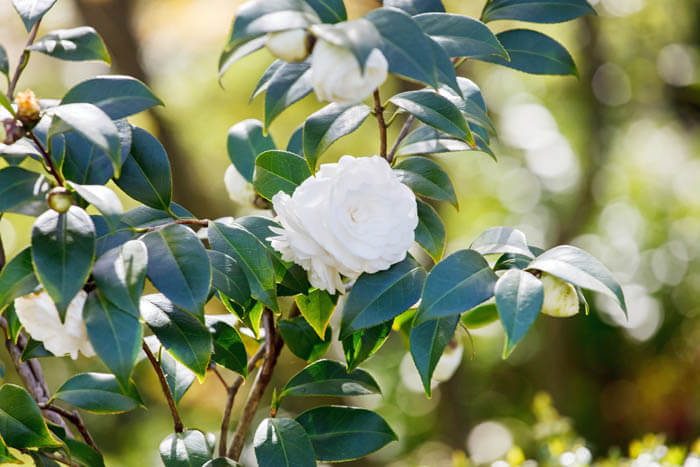
There is a wide assortment of gardenias (Gardenia spp.) to chose from, with some being quite winter hardy here in the western part of the Pacific Northwest. I have had Gardenia ‘Frostproof’ (Gardenia jasminoides Frostproof’) for several years, and it blooms outside for most of the summer. While the flowers are small, they have the typical gardenia fragrance. I leave my plant outdoors, but it could also be a winter blooming house plant. Gardenia ‘Mystery’ (Gardenia jasminoides ‘Mystery’) is a double-flowered variety used by florists, and if given an indoor location with lots of light, it will make a very nice house plant.
Dwarf Citrus
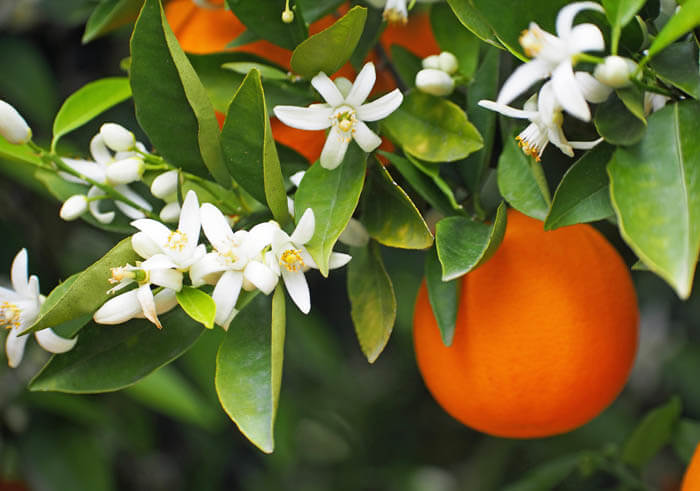
Dwarf citrus (Citrus spp.) are excellent choices for double-duty plants. Meyer lemon is probably the most widely planted, and if placed in a container of adequate size, it can live for many years. Citrus like heat and can be outside in full sun during the summer and then brought indoors for the winter. Meyer lemon will bloom with fragrant white flowers throughout the year and will also bear lemons at a fairly young age. If the plant has been outdoors all summer, spray it thoroughly with water before bringing it inside to wash off any insects that might be present. Be sure to bring the plant indoors before a frost. (Click here to learn more about growing indoor citrus.)
Pink Jasmine
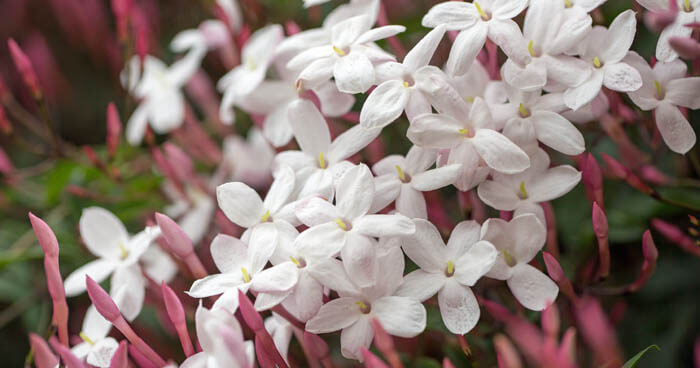
Another house plant is pink jasmine (Jasminum polyanthum). The vine produces masses of fragrant, star-like flowers that are reddish-pink on the outside, white on the inside, and intensely fragrant. This is a fairly reliable bloomer that flowers through most of the late winter and early spring. It is a fast grower and needs a small trellis for its twining stems to climb. Trim it regularly to keep it check.
Orange Jasmine
Orange jasmine (Murraya paniculata) is a compact plant with waxy white flowers that have an orange-blossom fragrance. Young plants start blooming early on. This is an easy-to-grow house plant that blooms reliably.
Madagascar Jasmine
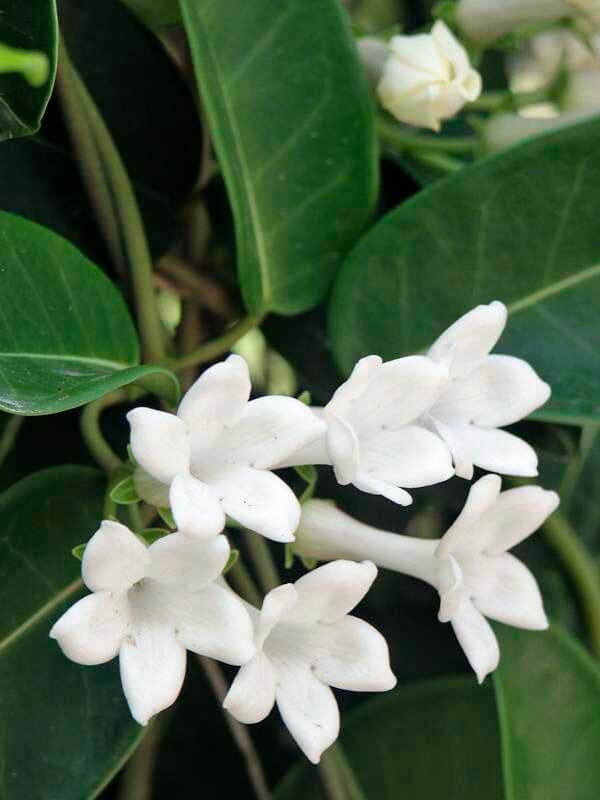
Often used in wedding bouquets because of its intensely fragrant white flowers, Madagascar jasmine (Stephanotis floribunda) is best grown as a house plant in cold climates. The vigorous evergreen vine needs something to twine up and likes humidity, so mist it on a regular basis. If given enough light, it will bloom indoors during the winter. The fragrance of the flowers will easily fill a room.
Pinwheelflower
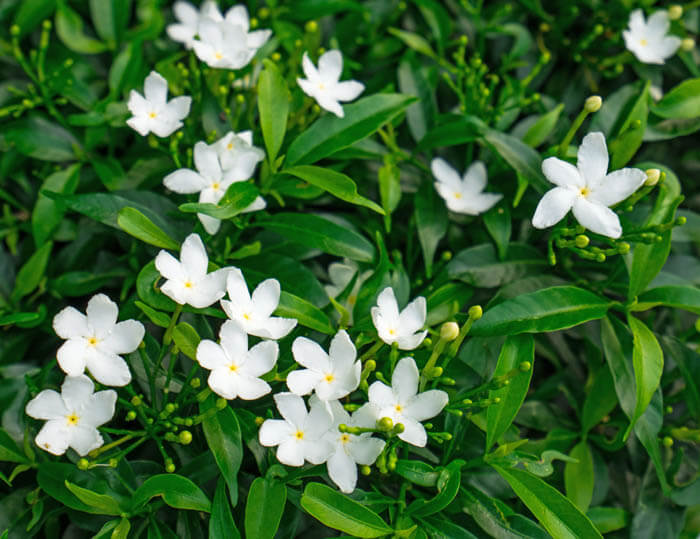
Like many of the other house plants listed, pinwheelflower (Tabernaemontana divaricata) has fragrant white flowers and evergreen foliage. The tender shrub is native to Southeast Asia but grows very well indoors in pots. It blooms the most in spring but may produce additional flowers throughout the year. The waxy white, blooms are most fragrant at night.
Over watering and poor drainage are common reasons for these house plants to diminish. Planting them in a premium potting mix that drains well will help ensure growing success. My mix of choice is premium Black Gold All Purpose Potting Mix. It has ingredients to help with drainage in addition to added fertilizer that lasts for up to six months. Start a regular fertilization regime several months after potting.
In addition to giving them plenty of light, keep your plants away from dry heat sources, such as heating vents or a fireplace, as this will stress the plants and their foliage. Once your fragrant house plants start to bloom, you will be glad you planted them. Their flowers and scent brighten dreary winter days, making the indoors just a little more enjoyable.
Eight Best Flowering House Plants
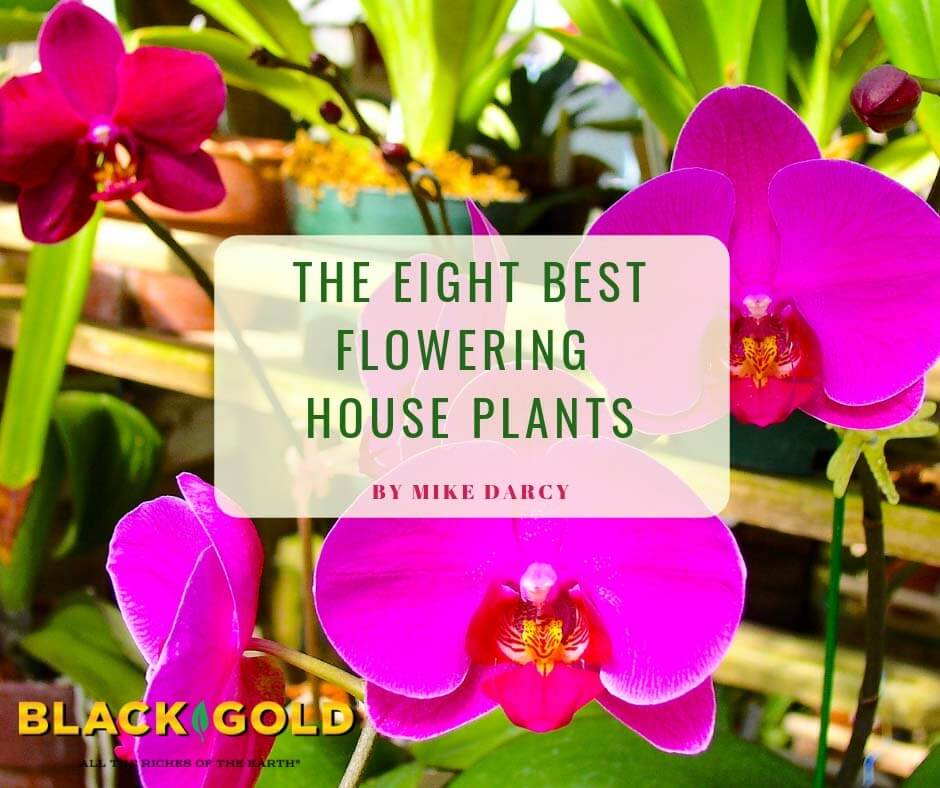
House plants have made a resurgence in popularity over the past several years and the trend shows no signs of diminishing. On a recent visit to a large Portland garden center that had just finished their annual January house plant sale, the manager told me it was the best one they have ever had. By the end of the first weekend, they were almost sold out. Throughout the sale, restocking was continuous.
 Some customers buy house plants for the flowers and others buy them for the foliage. Of course, it is a bonus if you can have both flowers and attractive foliage. Also, many flowering house plants bloom in winter when color is most desired.
Some customers buy house plants for the flowers and others buy them for the foliage. Of course, it is a bonus if you can have both flowers and attractive foliage. Also, many flowering house plants bloom in winter when color is most desired.
Like any plant, whether grown indoors or outdoors, good soil is essential. Black Gold All Purpose Potting Mix is an ideal potting mix for most indoor plants, except for orchids where orchid bark is recommended for epiphytic (tree-dwelling) orchids and Black Gold Orchid Mix is recommended for terrestrial (ground dwelling) orchids.
Flowering Kalanchoe
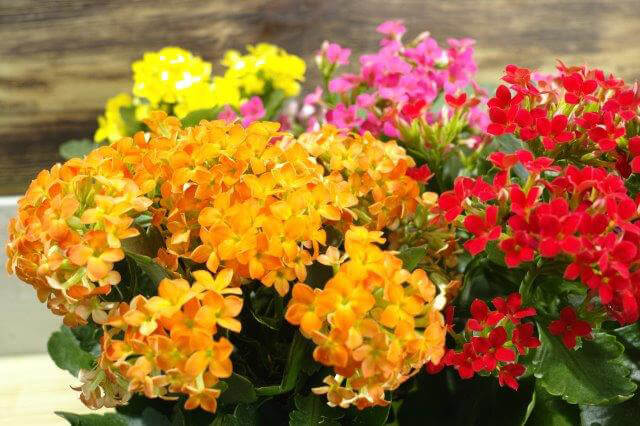
You will love the bright and colorful flowers of flowering kalanchoe (Kalanchoe blossfeldiana). You may not recognize this popular house plant by the name, but once you see it, you will know it. Its succulent green leaves sometimes have scalloped edges that make this plant attractive, even without flowers. And, its small, brightly colored blooms of pink, orange, red, or yellow appear in clusters above the leaves.
Clivia
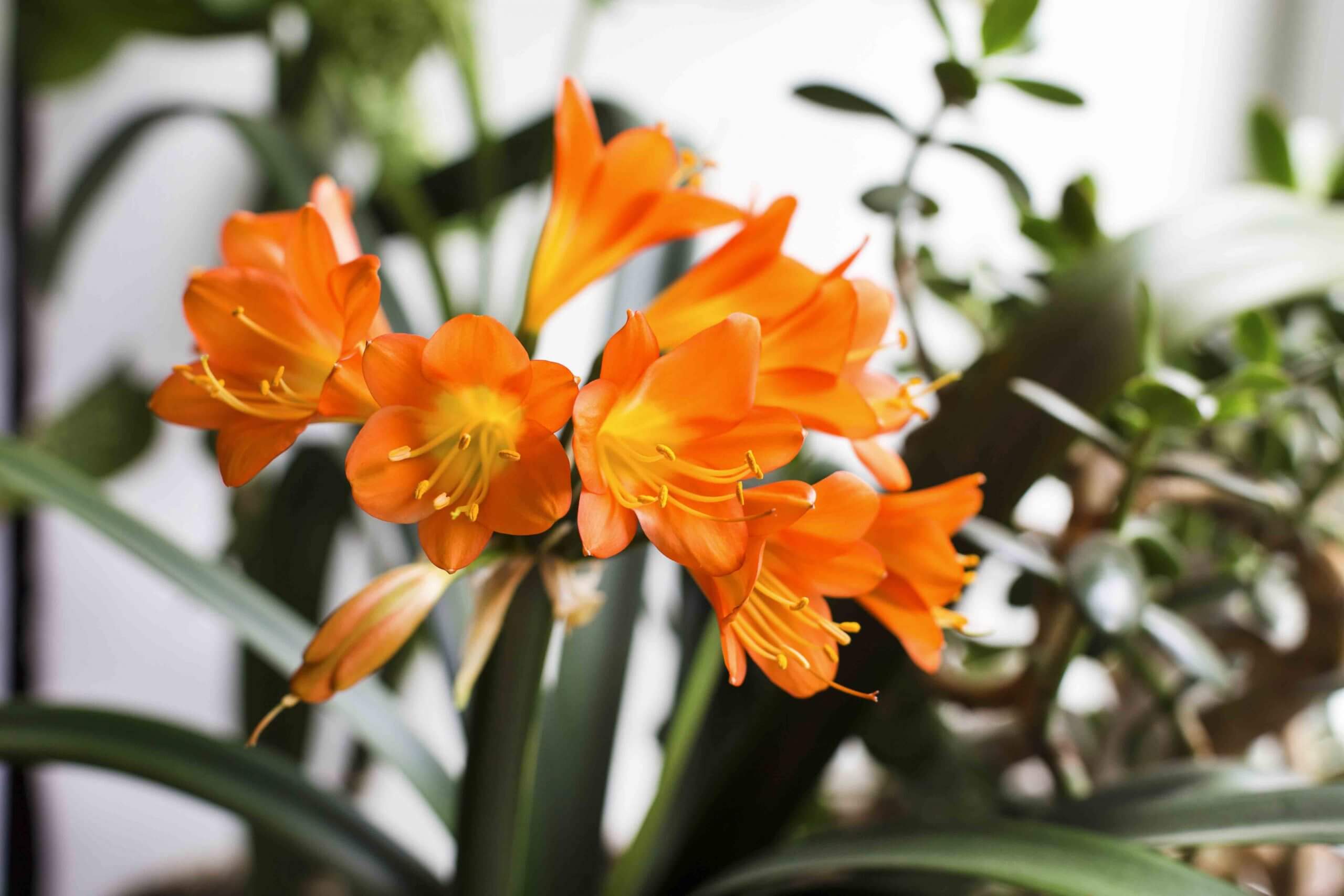
Clivia (Clivia miniata) is a member of the amaryllis family and produces clusters of large, orange, funnel-shaped flowers. Sometimes Clivia may have yellow flowers but orange is the most common. The strap-shaped leaves can be up to 2 feet long and are usually about 2 inches wide and very dark green. Clivia will bloom best if the roots are crowded in the pot.
Bird of Paradise
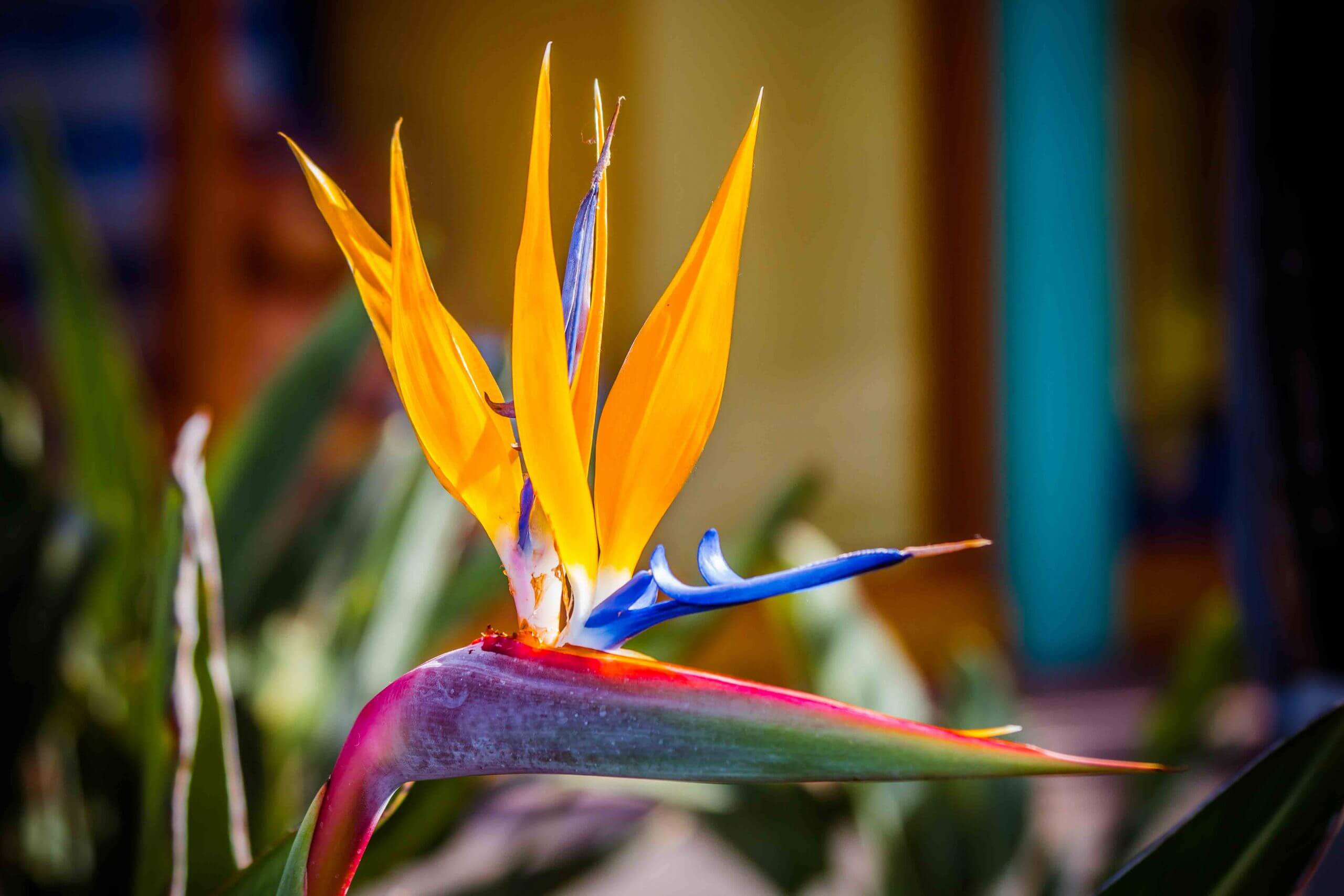
For large pots try the 5- to 7-foot bird-of-paradise (Strelitzia reginae). It is like Clivia in that it blooms best with crowded roots. It is named for its large, unusual flowers that look much like the head of a crested bird. The primarily orange flowers have highlights of blue and magenta and appear on long stems, making them excellent for cutting. (The cut flowers last a long time in the vase.) It’s bold, tropical leaves are dark green, often with a blue-green tint. Fertilize this one often.
Dwarf Citrus
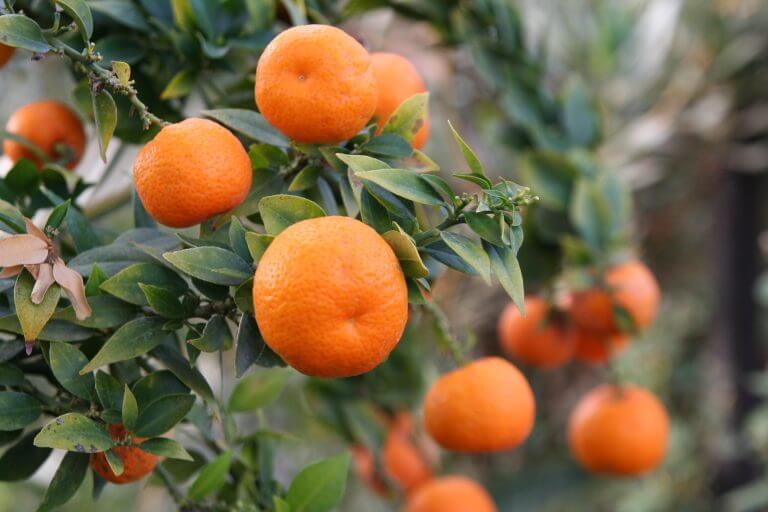
Dwarf citrus trees come in a variety of shapes and sizes and are popular because their flowers are so fragrant. If they actually set fruit, that is an added bonus. For a ‘starter’ citrus, I would suggest the Meyer lemon (Citrus limon ‘Meyer’) as it seems to adapt to being indoors better than some others. Another one to try is Chinotto sour orange (Citrus x aurantium ‘Chinotto’), which is compact, grows slowly, and bears clusters of sour orange fruits.
Citrus of all kinds do require plenty of light or they will get very leggy. Take them outside in the summer, and clean them up before you bring them indoors in fall, (Click here to learn how to clean house plants in fall before bringing them indoors.) and they will thank you! (Click here to learn more about growing Citrus indoors here.)
Night Blooming Jasmine

Night blooming jasmine (Cestrum nocturnum) has a very powerful fragrance, and as the name implies, it is a night bloomer. Grow this evergreen vine on a window sill, and prune it hard after bloom to encourage new growth and flowers. The attractive small flowers tend to be greenish white, but it is the fragrance that attracts one to this plant.
Orchids
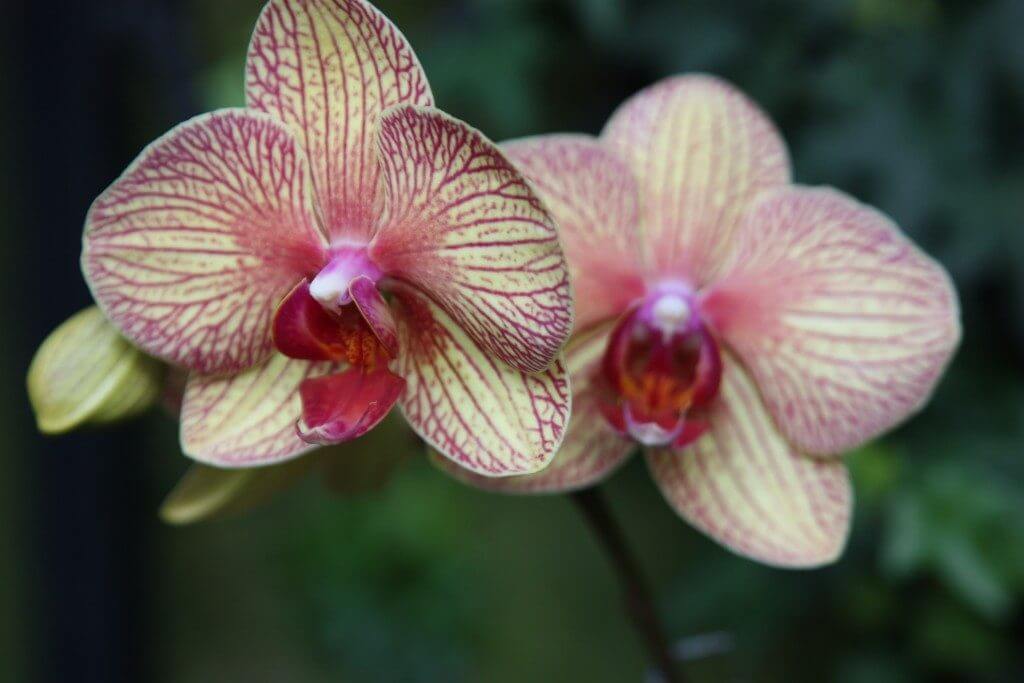
Orchids are flowering plants that are available in not only garden centers but in many grocery stores. There is a huge selection available as to flower color, shape, and size. Orchids are popular because the flowers last for a long time, often over several months. (Click here to learn more about how to grow orchids.)
Gardenia

Gardenia (Gardenia spp.) is another blooming plant with an intense fragrance that is most aromatic at nighttime. If you have enough light to grow citrus in your house, you can probably grow gardenia. These evergreen shrubs have shiny leaves, and the flowers are pure ivory. Gardenia ‘Mystery’ has large, white, double flowers that bloom over a long blooming period. Keep gardenias pruned regularly or they will become rangy.
Lipstick Plant
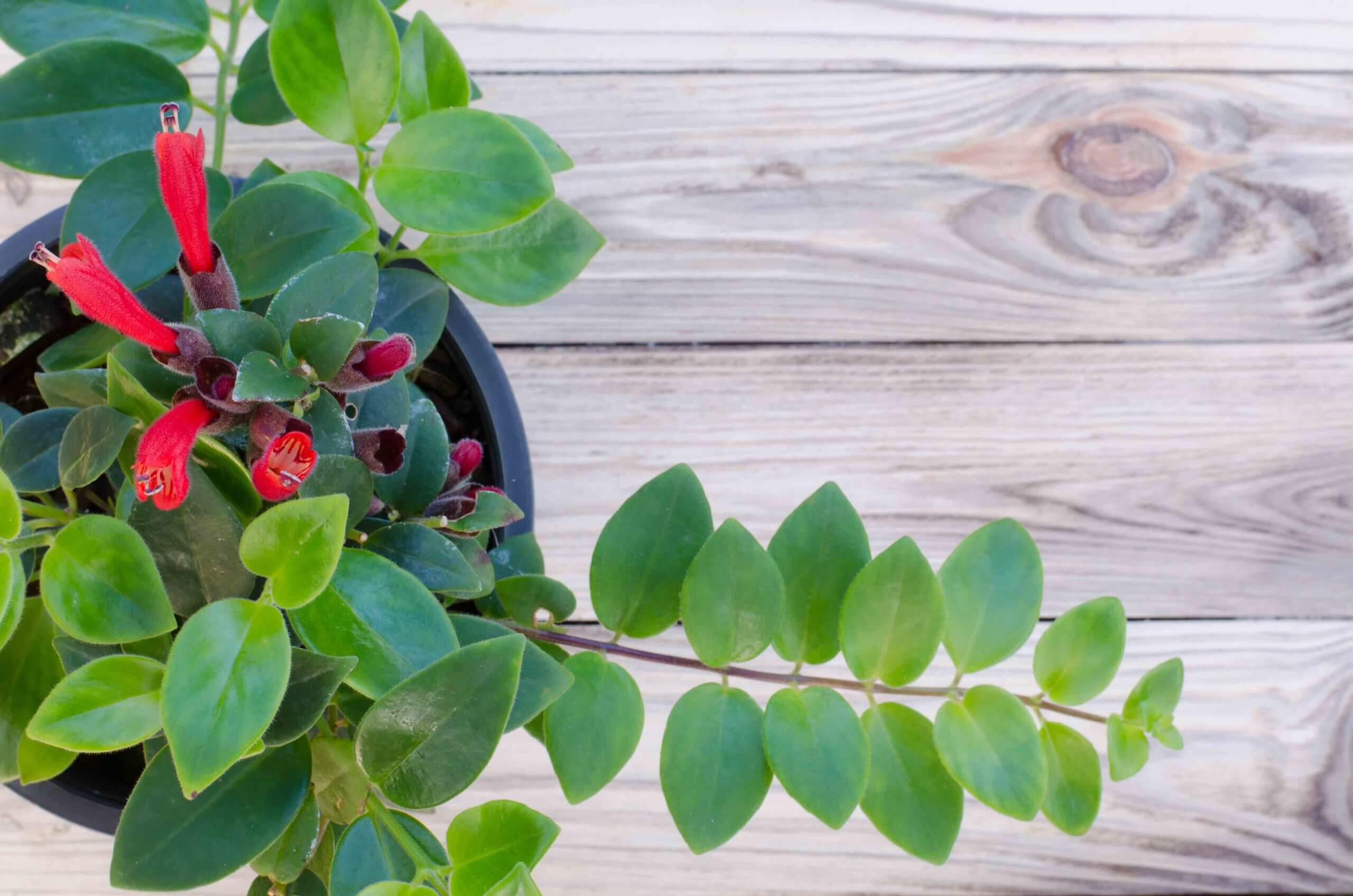
The vine-like lipstick plant (Aeschynanthus radicans) is a very easy houseplant to grow, and it looks great in a location where it can trail. Its tubular flowers are red and the stems cascade downward. It has a long blooming period and will tolerate low light.
House plants brighten the home, especially those with impressive flowers. It is always fun to try a new house plant, so I encourage people to experiment with something they have not grown before. Many can be taken outdoors during the summer, to improve the looks of the garden, porch, or patio.

